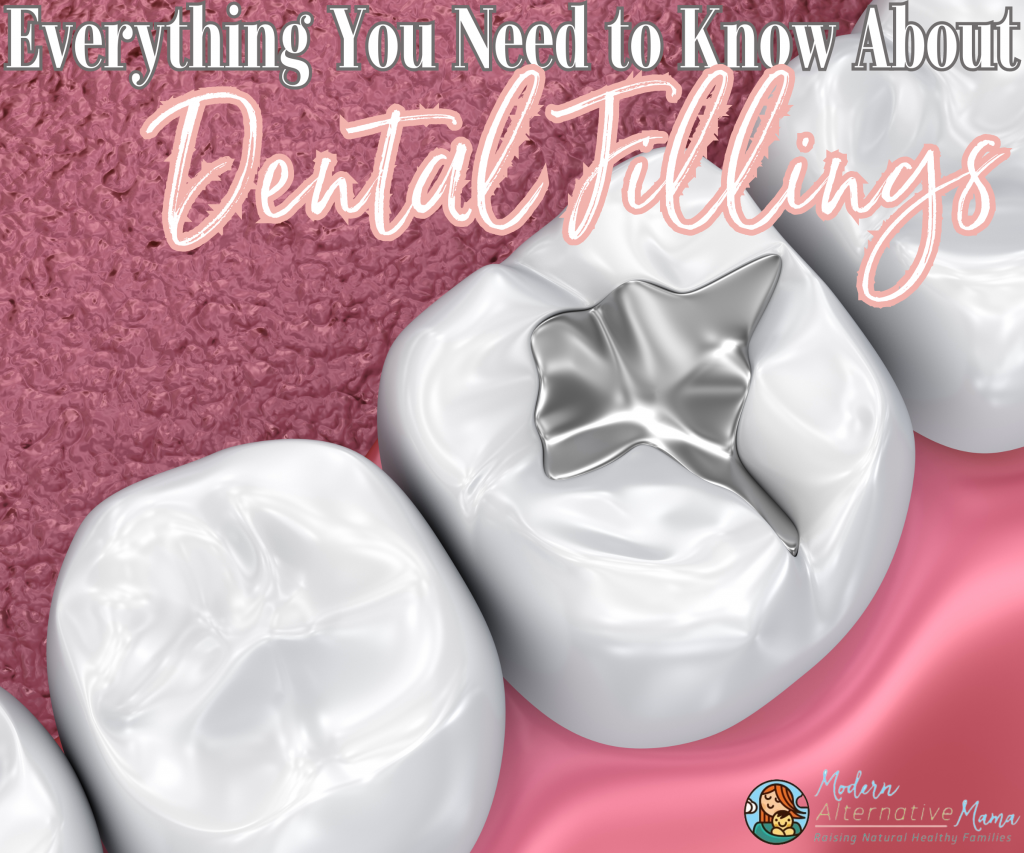Dentists. One of my biggest fears since I was a young child. I’m not sure what it is about the dentist, but I’ve never been a fan. As a teenager, I had my four wisdom teeth removed in three surgeries. After part of the tooth being left behind, a nearly broken jaw, and discoloration around my mouth that lasted nearly a decade, it’s no wonder I was never willing to go to the dentist again.
At least, not until I learned I had a filling in my mouth that was potentially leaching harmful toxins into my body.
I’ll never forget the day. I was at the orthodontist getting images before braces. I always prided myself on my oral hygiene and never having a cavity. That bright white spot on my left top molar in my x-ray said something else. There she was, a filling I must’ve gotten as a small child that I have zero recollection of.
I minded nothing of the cavity. Of course, I couldn’t say I’ve never had a cavity anymore, but the thought of the filling composite being toxic wasn’t even an idea yet. Heck, I was a young adult, and my only concern was to straighten my teeth. Natural health wasn’t even something I’d considered, as I was still considered “healthy.”
Everything You Need to Know About Dental Fillings
Dental fillings are one or a combination of materials like metals, plastics, glass, etc., used to repair or restore decaying teeth due to a cavity. Fillings may be used to repair cracked or broken teeth and teeth worn down from misuse (such as nail-biting or tooth-grinding). When a patient gets a filling, the dentist will remove the decayed or broken portion of the tooth and “fill” the area with an approved filling composite (1).
Silver, gold, and porcelain composites are the most commonly known fillings. All three types of fillings have been FDA-approved, but that doesn’t mean they’re all safe in a place like your mouth, especially long-term. Whether you already have dental fillings or are on the market, making an informed decision for your health is necessary, so let’s get to it.
Silver Fillings
Silver, or amalgam fillings, have been used by dentists for over 100 years. Amalgam has been the go-to composite for dental fillings because it lasts a long time (10-15 years) and is less expensive than other cavity-filling materials (2). The problem with amalgam fillings is the ingredients. It’s not just silver as you’d think; it’s composed of 50% mercury and 50% powdered alloy containing silver, tin, and copper, creating a silver-like appearance (3).
“Dental amalgam fillings may release small amounts of mercury in the form of a vapor (gas), depending on the number and age of existing fillings, and actions such as tooth grinding and gum chewing (3).”
The FDA recognizes the risks associated with amalgam fillings and mentions the following potential risks (4):
- Contains elemental mercury.
- Releases low levels of mercury in the form of a vapor that can be inhaled and absorbed by the lungs. Exposure to high levels of mercury vapor, which may occur in some occupational settings, has been associated with adverse effects in the brain and the kidney.
- Developing neurological systems in fetuses and young children may be more sensitive to the neurotoxic effects of mercury vapor.
- Very limited to no clinical data is available regarding long-term health outcomes in pregnant women and their developing fetuses, and children under the age of six, including infants who are breastfed. Pregnant women and parents with children under six who are concerned about the absence of clinical data as to long-term health outcomes should talk to their dentist.
- Although the available evidence does not show that exposure to mercury from dental amalgam will lead to adverse health effects in the general population, exposure to mercury may pose a greater health risk in the groups of people listed below, who may be more susceptible to potential adverse effects generally associated with mercury.
- Pregnant women and their developing fetuses;
- Women who are planning to become pregnant;
- Nursing women and their newborns and infants;
- Children, especially those younger than six years of age;
- People with pre-existing neurological disease;
- People with impaired kidney function;
- People with known heightened sensitivity (allergy) to mercury or other components (silver, copper, tin) of dental amalgam.
- Some individuals have an allergy or other sensitivity to mercury or the other components of dental amalgam (such as silver, copper, or tin). Dental amalgam might cause these individuals to develop oral lesions or other sensitivity reactions.
- If you are allergic or otherwise sensitive to any of the metals in dental amalgam, you should not get amalgam fillings. You can discuss other treatment options with your dentist.
Despite all this, they still recommend against the removal or replacement of amalgam fillings, specifically stating:
“The FDA does not recommend anyone remove or replace existing amalgam fillings in good condition unless it is considered medically necessary by a healthcare professional (for example, documented hypersensitivity to the amalgam material).”
I got my amalgam filling removed in 2023 and noticed a significantly positive change in my overall health. To remove an amalgam filling(s), I recommend finding a holistic dentist certified in the safe mercury amalgam removal technique (SMART) through IAOMT. Proper removal is crucial as the mercury can leach into the mouth, wreaking havoc on the body. The removal process was costly but oh so worth it, in my experience.
Gold Fillings
Gold fillings, sometimes called inlays or onlays, are usually composed of 75% gold and 25% a mixture of copper, silver, platinum, palladium, and zinc (5). Gold fillings aren’t used as often today. Although gold fillings were considered the most durable (lasting 20+ years), they were also the most expensive (6).
I scoured the internet to find data similar to what was discussed for amalgam fillings but came up empty-handed. The largest documented concern I could find regarding gold fillings was galvanic shock. When a gold filling is placed next to an amalgam filling, an electrical interaction (or current) occurs between the metal alloys and the saliva, producing a sharp pain known as galvanic shock.
If you read our blog, Everything You Need to Know About Heavy Metals, you know all ingredients in gold fillings, except palladium, are considered heavy metals. Since gold fillings aren’t mercury-based, they don’t leach the same way as amalgam fillings, but due to heavy metal exposure, I would still consider removing them if you have them. To my understanding, gold fillings don’t require a special technique to be removed.
Porcelain Fillings
Porcelain fillings, sometimes called porcelain inlays and onlays or ceramic fillings, are custom-made fillings made from a ceramic polymer material that can be placed over or into a cavity (7). The biggest reason people oppose porcelain fillings is because they’re less durable and degrade over time. Interestingly, porcelain filling can last as long as silver and gold fillings – upwards of 20 years (8).
Porcelain fillings are made from polymer ceramic materials, inorganic-organic composites consisting of ceramic fillers, and organic polymers like polysiloxanes (9). Polysiloxanes are synthetic silicon and oxygen polymers (siloxane) modified with various organic groups attached to the silicon atoms (10).
When having a silver or gold filling removed, they’re usually replaced with a porcelain filling. Although porcelain fillings aren’t the perfect material, they’re free from heavy metals, nonreactive, and resistant to staining (11). When I had my amalgam filling removed, I replaced it with porcelain, as I felt it was the safest and most durable alternative available.







